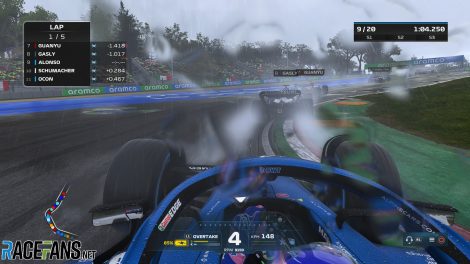In one month’s time, EA Sports will release their third officially licensed Formula 1 game under their banner: F1 23.
The launch of a new F1 game is no longer just a moment marked on the calendar of Formula 1 fans, it is now one of the biggest annual sports game releases and a major point in the simracing year – even if elitists will protest mentioning ‘F1 23’ and ‘simracing’ in the same sentence.
But F1 23 heads to shelves and online storefronts with the unenviable task of restoring the series’ reputation following a down year in 2022.
Between F1 2015 – a disappointing entry into the last generation of consoles – and last year’s game, Codemasters’ long-running franchise enjoyed solid critical and player reception, providing millions of hours of exciting and rewarding racing action for players across the world.
That run ended with F1 22. The first entry in the series to have its entire development cycle under supervision of EA Sports may have sold no worse than those before it but players and critics alike did not feel the magic last time around. RaceFans awarded last year’s entry three out of five while review aggregators Metacritic recorded a combined average of 79 – by no means bad, but the first time the series dipped below 80 since the 2015 game.
So with the release of the latest game inching ever closer, what were players’ problems with last year’s entry and how are EA planning to make F1 23 the best in the series so far?
Handling and physics
A new F1 game means new handling tweaks. While usually a result of developers trying to strike an ever-better balance between realistic, rewarding and accessible handling for both controllers and wheels, Codemasters have also had to mirror the real life regulation changes of each new season and reflect how drivers have to adapt their driving style with each new generation of cars.
It was no surprise that F1 22 featured heavily revised driving physics to emulate the new ground effect aerodynamics introduced that year. But the feedback from players was that the new model was far less predictable than previous years. Traction was especially an issue, with cars prone to breaking away under acceleration even in fourth gear, suddenly snapping with little opportunity to detect or catch a slide.

But complaints over F1 22’s physics did not just come from average or low-skilled players who simply didn’t want to invest the time into mastering the new handling…
Click Here to Read the Full Original Article at RaceFans…
